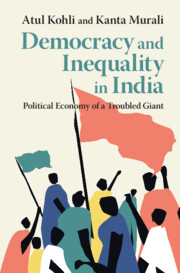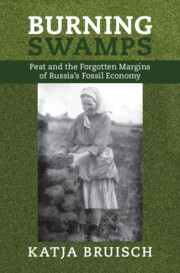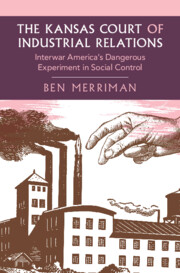Refine search
Actions for selected content:
259 results
An Unlimited Supply of Labor? Counting Workers and Planning Development in Mid-Twentieth-Century Egypt (1939–1960)
-
- Journal:
- International Labor and Working-Class History , First View
- Published online by Cambridge University Press:
- 03 November 2025, pp. 1-17
-
- Article
-
- You have access
- Open access
- HTML
- Export citation
4 - Labor, Gender, and Civil Society Mobilization
- from Part II - Politics from Below
-
- Book:
- Democracy and Inequality in India
- Published online:
- 11 October 2025
- Print publication:
- 30 October 2025, pp 136-198
-
- Chapter
- Export citation
Introduction
-
- Book:
- Democracy and Inequality in India
- Published online:
- 11 October 2025
- Print publication:
- 30 October 2025, pp 1-12
-
- Chapter
- Export citation
Chapter 20 - Bloomsbury and the Meanings of Labor
- from Part IV - Public Bloomsbury
-
-
- Book:
- A History of the Bloomsbury Group
- Published online:
- 09 October 2025
- Print publication:
- 23 October 2025, pp 334-348
-
- Chapter
- Export citation
Sustainable Disaster: Fantasies of Resilience, Global Adaptation Science, and East Asia’s Seawomen
-
- Journal:
- Comparative Studies in Society and History , First View
- Published online by Cambridge University Press:
- 17 October 2025, pp. 1-27
-
- Article
-
- You have access
- Open access
- HTML
- Export citation
Capitalist Flows and Working-Class Conditions: Colonial Labor Management and Racial Formations in Southeastern Africa, 1851–1900
-
- Journal:
- The Journal of African History / Volume 66 / 2025
- Published online by Cambridge University Press:
- 15 October 2025, e21
-
- Article
-
- You have access
- Open access
- HTML
- Export citation

Democracy and Inequality in India
- Political Economy of a Troubled Giant
-
- Published online:
- 11 October 2025
- Print publication:
- 30 October 2025
2 - “Give Me the Little Book”
-
- Book:
- God, Slavery, and Early Christianity
- Published online:
- 19 September 2025
- Print publication:
- 09 October 2025, pp 91-130
-
- Chapter
- Export citation
Chapter 9 - The Legal Character of Paupers in Early Nineteenth-Century England
-
-
- Book:
- British Law and Literature in the Long Eighteenth Century
- Published online:
- 19 September 2025
- Print publication:
- 09 October 2025, pp 187-208
-
- Chapter
- Export citation
A Menace to Free Labor: Anti-Catholicism, the American Protective Association, and Working-Class Formation in Gilded Age America
-
- Journal:
- The Journal of the Gilded Age and Progressive Era / Volume 24 / Issue 4 / October 2025
- Published online by Cambridge University Press:
- 27 October 2025, pp. 409-430
- Print publication:
- October 2025
-
- Article
- Export citation
3 - Exploitation
- from Part II - Working Environments: Extraction and the Making of Place
-
- Book:
- Burning Swamps
- Published online:
- 06 September 2025
- Print publication:
- 25 September 2025, pp 97-133
-
- Chapter
- Export citation

Burning Swamps
- Peat and the Forgotten Margins of Russia's Fossil Economy
-
- Published online:
- 06 September 2025
- Print publication:
- 25 September 2025
5 - The KCIR in National Public Life
- from Part II - The KCIR in the World
-
- Book:
- The Kansas Court of Industrial Relations
- Published online:
- 26 July 2025
- Print publication:
- 14 August 2025, pp 121-146
-
- Chapter
- Export citation
Chapter 8 - Our Rights to Ourselves and Others
-
-
- Book:
- Kant's Lectures on Political Philosophy
- Published online:
- 18 July 2025
- Print publication:
- 07 August 2025, pp 142-160
-
- Chapter
- Export citation
Chapter 7 - The Economy in the Feyerabend Lecture Notes on Natural Right
-
-
- Book:
- Kant's Lectures on Political Philosophy
- Published online:
- 18 July 2025
- Print publication:
- 07 August 2025, pp 122-141
-
- Chapter
- Export citation
4 - Contradictions
- from Part III - Connections
-
- Book:
- Fractured Pasts in Lake Kivu’s Borderlands
- Published online:
- 17 July 2025
- Print publication:
- 31 July 2025, pp 147-170
-
- Chapter
- Export citation

The Kansas Court of Industrial Relations
- Interwar America's Dangerous Experiment in Social Control
-
- Published online:
- 26 July 2025
- Print publication:
- 14 August 2025
Japanese Postwar Success: The Impact of Moral Re-Armament
-
- Journal:
- Enterprise & Society , First View
- Published online by Cambridge University Press:
- 23 July 2025, pp. 1-29
-
- Article
-
- You have access
- Open access
- HTML
- Export citation

Fractured Pasts in Lake Kivu’s Borderlands
- Conflicts, Connections and Mobility in Central Africa
-
- Published online:
- 17 July 2025
- Print publication:
- 31 July 2025
Chapter 2 - Betweenness
-
- Book:
- Embodiment in Nineteenth-Century American Literature
- Published online:
- 29 June 2025
- Print publication:
- 17 July 2025, pp 55-82
-
- Chapter
- Export citation
